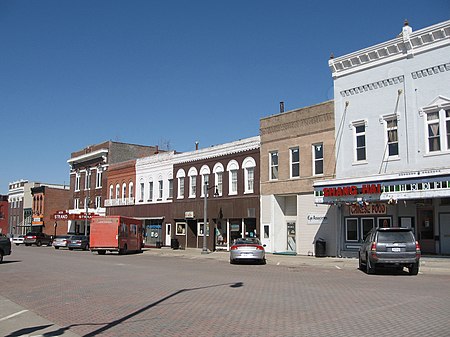West Liberty, Iowa
1868 establishments in IowaCities in IowaCities in Muscatine County, IowaUse mdy dates from July 2023Vague or ambiguous time from January 2022

West Liberty is a city in Muscatine County, Iowa, United States. The population was 3,858 at the time of the 2020 census. It is part of the Muscatine micropolitan area. West Liberty is located five miles south of Interstate 80 on Historic Highway 6. The city is home to the West Liberty Raceway, located in the Muscatine County Fairgrounds. The Muscatine County Fair takes place in West Liberty in July of each year.
Excerpt from the Wikipedia article West Liberty, Iowa (License: CC BY-SA 3.0, Authors, Images).West Liberty, Iowa
East 4th Street,
Geographical coordinates (GPS) Address Nearby Places Show on map
Geographical coordinates (GPS)
| Latitude | Longitude |
|---|---|
| N 41.571388888889 ° | E -91.261111111111 ° |
Address
East 4th Street 277
52776
Iowa, United States
Open on Google Maps









